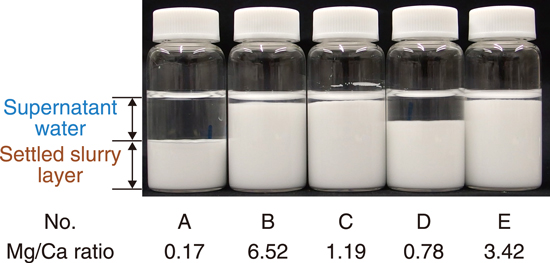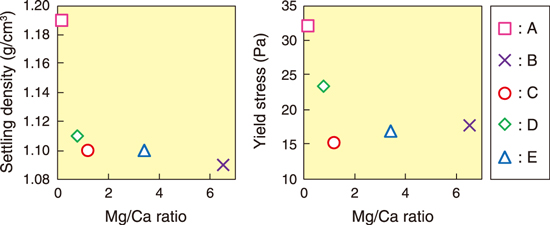
Fig.1-9 Estimated behavior of expansion of slurry and rise of the supernatant water level in a storage container

Fig.1-10 Appearance of a simulated carbonate slurry

Fig.1-11 Effect of Mg/Ca ratio in raw water on the density and yield stress of the settled slurry
In TEPCO’s Fukushima Daiichi NPS, supernatant water leaked from some storage containers filled with slurry waste (carbonate slurry), which mainly comprised carbonate precipitates generated from the Advanced Liquid Processing System (ALPS). Retention of hydrogen gas bubbles generated by the radiolysis of water by β ray–emitting radionuclides in the slurry was presumed to be responsible for the overflow (Fig.1-9),but similar events were not observed in most of the storage containers stored at the same time. For clarifying conditions leading to the overflow to occur, it is necessary to focus on the properties of the slurry itself. In this study, we examined artificial slurry that simulates the composition in the storage container where the overflow occurred. The density of the settled slurry layer, which is considered to affect bubble retention behavior, and the yield stress as an index related to the behavior of bubbles in a settled slurry layer were measured under nonradioactive conditions to clarify the effect of composition.
Investigation of the analytical records of magnesium (Mg) and calcium (Ca) concentrations [in ppm] in water before ALPS treatment (inlet water) during the period when overflow of slurry was observed showed that Mg and Ca concentrations were higher in this period than in the other periods.
Therefore, we prepared five simulated inlet waters (raw water) with different Mg/Ca ratios. Carbonates and other substances were precipitated from these raw waters and concentrated until the concentration of the suspended solids reached 150 g/L using a cross-flow filtration technique, which is the same method used in ALPS. Settling tests were conducted over a period of two weeks. The two weeks of standing, settling density, and yield stress were measured.
These results showed that the lower the Mg/Ca ratio in raw water (i.e., the higher ratio of Ca), the higher is settleability, and the higher are the settling density and yield stress after static storage (Fig.1-10, Fig.1-11). Such differences in yield stress and other characteristics due to the differences in raw water composition may be responsible for the differences in the bubble retention characteristics in storage containers.
In conclusion, we clarified the effects of the Mg/Ca ratio of raw water on the settling density and yield stress of the simulated slurry and clarified that information on the composition of the inlet water is important for simulating overflowing slurry in a storage container. Based on the characteristics of the carbonate slurry clarified in this study, we plan to evaluate the bubble retention behavior under radioactive conditions via irradiation tests.
(Takuma Horita)